Saturday, October 30, 2010
For Us By Us: The Fashion Film
Thanks to everyone who came!
(my dress is in the teacup scene from 0:31 to 2:14, worn by the girl in the turban)
:)
Sunday, August 22, 2010
C'est Fin.




It has been an interesting journey. I've learnt a lot and challenged a lot more. It has been strange to take such an intuitive process, abandoning the linear system of conceptualizing and toiling and designing, but I am happy with the end product.
I don't know much about the outcome of For Us By Us in terms of exhibition and public forum...I thought I'd feel a little bit hesitant to let such an intrinsic process be exposed to audience. But it would seem as though I have been watched the entire process anyhow, with the documentary...and quizzed on motifs and feelings. Scruitiny is something I have been scared of in previous works, but I think it is the passion behind the collaboration and promotion of Brisbane creative industries which has made it an easier process.
Louise's work doesn't have a definitive finish, which I have accepted in my own work in this garment...there are things I could tweak, reconisder. And I think there will always be things I'll question or want to pursue in it...but I'll leave that to other endeavours and experiments in my practice.
For the time being, c'est fin.
Saturday, August 21, 2010
Advances and experimentations
Earlier in the week I was talking to Mark about how he constructed the gathering in his sister's wedding dress, and I remembered him describing a technique to me about curtain tape and creating gathers that billowed out from the waistline. It wasn't the same technique I had in mind for the skirt, but I did want to accentuate gathers in the waistline so I figured that by pleating the hemline, the tulle layering in the hemline would act as a double support and make the pleats more voluminous.
So the pleating at the waistline has been created from the double-strength hemline, which resulted in neater pleats too.




Friday, August 20, 2010
Fashion Futures 2025
Fashion Futures is a response to the unethical practices of the fashion industry and a call for a sustainable overhaul. Its designed to help organisations in all sectors take action which will safeguard their future, protect our environment and improve the lives of their customers, workers and suppliers around the world.
Four vivid scenarios explore how climate change, resource shortages, population growth and other factors will shape the world of 2025 and the future of the fashion industry within it. They are designed as a tool to challenge companies’ strategies, inspire them with new opportunities and help them plan for the future.
Techno-Chic from Alex Johnson on Vimeo.
Community Couture from Alex Johnson on Vimeo.
Techno-Chic from Alex Johnson on Vimeo.
Patchwork Planet from Alex Johnson on Vimeo.
The Forum highlights 5 lessons for the industry to take note of:
1. Prepare now for a radically different and uncertain future
Companies should prepare now and put strategies in place for a variety of scenarios. They should carry out a risk assessment of their business models and supply chains; put together a sustainability roadmap covering the full product/service lifecycle; and ensure they understand the social and environmental context in which their products and services are used.
2. Seize the opportunity to be a trailblazer
Companies can gain first mover advantage by taking action on quick wins, such as energy efficiency. They can also benefit from taking the lead in talking to consumers and investors about the importance of sustainable production and consumption, lobbying government and driving collective industry action.
3. Put change into practice
In a world which is changing rapidly and unpredictably success will depend more than ever on being flexible and innovative. Companies should invest in design and innovation; explore new business models and ownership structures; and trial new ideas to see what works.
4. Look out for unexpected competition
Many different industries now play a part in the fashion industry, from information and communications technology (ICT) and sport to supermarkets and pharmaceuticals, and new competition can emerge from unexpected areas. Companies should embrace alliances with new partners where this can enable sustainable growth. They should also consider how to apply their core competencies to new markets.
5. Develop skills for a new world
Companies should start developing the skills they will need to be successful in the future.
The industry will need climate change experts, water policy specialists, innovators with skills
in design for disassembly and closed-loop manufacturing and many more. Businesses should also explore trends where the customer becomes a supplier, designer and seller as well as a buyer of fashion.
What I like about this forum is not just that it is actively engaged in promoting sustainable education at the heart of innovation in students, but that it is proactive in promoting fundamental sustainable development, as explained in the increments of change a few posts ago. This advises fundamental change on a whole new level, concerning not just change in production but also in consumer awareness and ethical belonging.
The initiative to have something like this integrated into an education scheme is extremely inspiring, and I think having an outcome like the For Us By Us exhibition allows us to voice our issues to a wider audience through a form of impactful consumption. In my own practice, I endevour to adhere to some of these guidelines, particularly pursuing further education in sustainable developments.
Thursday, August 19, 2010
Production
With the excess fabric cut off to shape that left side, I used it to reattach to the right shoulder to join the back and front again.


I then started playing with the material of the skirt, unpicking the back seam which originally had a zip down the side and the train out the back. I started playing around and shaping it into the bottom of the bodice. I like how the waistband curves around the cut out, but the waistband is a bit gross so I think I will be removing it at some point...
Wednesday, August 18, 2010
Groovers and Shakers: Sustainable Innovators
- Helen Furber, a recent graduate of Cordwainers London College of Fashion.
"Icica Wedges"
Each part of Helen Furber‘s shoes can be disassembled post-consumption for recycling, and the stalactite-looking heel is actually made of bio-resin, which is a material derived from sunflower oil and is used for casting and laminating.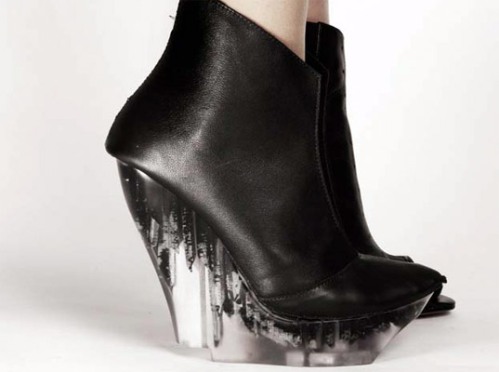
Icica from Helen Furber on Vimeo.
- Maxjenny Forslund: MAXJENNY
‘The concept is to create simple, unique and timeless clothing made from high quality sustainable materials, with stylish cuts and minimal seams. The collections consist of clothing that stays true season after season, clothing you will want to wear again and again… concentrating on a few styles and evolving the assortment gradually, without sharp boundaries between seasons’ (The Ethical Fashion Blog, 15-02-10)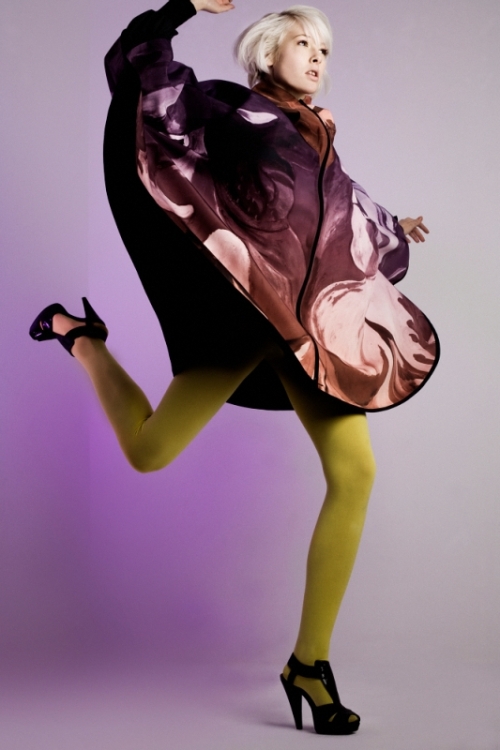
- Christopher Raeburn, 2006 graduate of the Royal College of Art
Jackets made from redeployed military fabrics. Not only are they aesthetically delicious and perfectly executed but they are also functional, waterproof and ready for all kinds of action.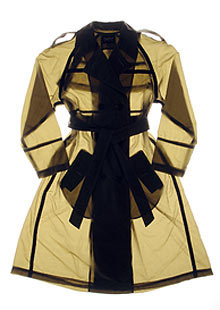
Tuesday, August 17, 2010
Tweaking my design philosophy
The target customer for this aesthetic is a mindest. They appreciate tailoring and detail, and respond to the conceptual layers of culture, art and society within each design. They are a chameleon. They are innovators.
I have discovered that the strategies of sustaibable implementation which appeal to me most are those that are subtle and encompass humanitarian efforts. I believe in building strong business fundementals which inspire and support local industry, and consider a conscious footprint not only in the product, but within the industry and society.
Concerning the product, I aspire for the constant pursuit of technological innovations in ethical product materials, and in each design consider the longeivity of the item, ensuring a high standard of quality and excellence.
Considering the industry, I aspire to implement a strong Corporate Social Responsibility, ensuring ethical working practices and product manufacturing and distribution
Considering society, I aspire for the influence and support of communities, promoting environmental awareness and actively challenging political issues from profit.
Monday, August 16, 2010
Sustainable Luxury Brands
Marie Brown explains the 3 levels of impact of sustainable implementation:
- The product itself: being ethical, made from natural materials, being biodegradable, and a quality product that has a certain longevity.
- Within the industry: Corporate Social Responsibility, upholding environmentally viable supply chains, ethical working practices, sourcing raw materials sustainably
- Within Society: giving back to communities, corporate sponsorship, founding ethical and chariatable associations
(Glass, Rapture, p166)
I found Brown's brand sustainable strategies particularly interesting and something of a guide I would follow in my own practice. The reason I am disecting this article and exploring particuarly luxury fashion brands is because I am beginning to see in my own designs an alignment with the luxury aesthetics of beauty, quality and excellence. And so I find it relevant and of inspiration to look into how fashion's top luxury brands are implementing sustainable strategies whilst retaining this aesthetic.
Brown goes on to explain in her article how companies like Burberry have made strong sustainable commitments in their business models.
Burberry suffered financial instability in 2008, but have bounced back with immense internal changes towards the sustainable practices and models:
"So far they are succeeding in reducing CO2 production emissions, reduction of
packaging, switching to energy-saving programmes in stores and headquarters,
along with reverently conducting factory visits to ensure top working conditions
for employees...bottom line figures have allowed Burberry to invest in admirable
chariatable programmes to give back to the communities where Burberry employees live and work." (Glass, Rapture, p167)
Number one luxury group Louis Vuitton (LVMH) is a massive influence and lead in sustainable business modelling. With the introduction of a carbon inventory that can accurately measure the impact of the company's activities on the environment, they are able to modify their organisations to reduce carbon dioxide emissions (LVMH 2010). The Group's commitment towards environmental protection materialized in 2001 by the the "Environmental Charter" was reinforced in 2003 by joining the United Nations' Global Compact. That initiative, which was launched by Kofi Annan, Secretary General of the UN, requires its signatories to apply and promote nine principles in the field of human rights, labor and the environment (LVMH 2010). LVMH stands as an influential leader in sustainable development by branching out it's strategies not only within it's own business model, but to inspire, educate and support it's consumers and business associates as well.
The reason why I look to these luxury brands for sustainable leadership in the industry is because they have the power, economy and position to pioneer ethical trading. And as Brown concludes, " They hold the key to deploying technilogical innovations and raising awareness not only with the consumer, but also in alliance with the media, designers, buyers and retailers to show how ethical production can and must be the next chapter in luxury fashion's evolution" (Glass, Rapture, p168).
Thursday, August 12, 2010
Improv and Variations
I'm developing a fitted bodice from the linen tunic, and reshaping the satin from the wedding skirt into something from the waist down.
Firstly I experimented with proportion of the linen tunic, and tried out some variations of traditional ways to wear it. It is a simple pattern: circular neckline and armholes, bust and shoulder darts. There is a zip down centre back, which I played around.

I ended up reversing the garment so the back was the front, and rotated to it's left side so that the right armhole became the neckline and the neckline became the left armhole, with the zip going diagonally across the front.
I then unpicked the side seams to try and work out the right armhole. As a result, the only seam that attached the front to the back was the shoulder seam from the neck to the right armhole.
I was left with the front and back sections of the dress and a desire to create a more fitted torso. Inspired by a weaving technique illustrated in the Japanese pattern book Pattern Magic, I began to form strips from the fabric of the linen tunic, waist down, to weave and create texture as well as a more fitted sillhouette. The strips were very clumsily hacked into, I drew an outline in black felt which I should try and either wash out or involve with Louise's concept of drawing on the body. The outcome was weaving to the right side of the garment, which tightened the torso and left a nice cutout shape from the pre-existing left armhole as a cut-out on the left side.



I like how it came together quite quickly and playfully. Now that I think about it, it literally happened later in the day after 3.30 boredom-itis, which relates funnily enough to Louise's work. It is a little clumsy and in early stages of form at the moment, but I am going to continue improvising like that and defining details over the next week or so.

Tuesday, August 10, 2010
Where Ends Meet
So I pondered a long while today over past works...and discovered a couple of things within my aesthetical tendencies towards texture and shape.
1) Linework: I tend to have an affinity in forming lines within texture.
Panels, pleates, drapes, digital prints are some techinques I keep referring to time and time again throughout my designs. I don't know what it is about lines...perhaps it is because they are streamlined, neverending, crisp, directive. I find lines on people flattering, anyhow.
Horizontal lines make you look fat.
Vertical lines make you look slim.
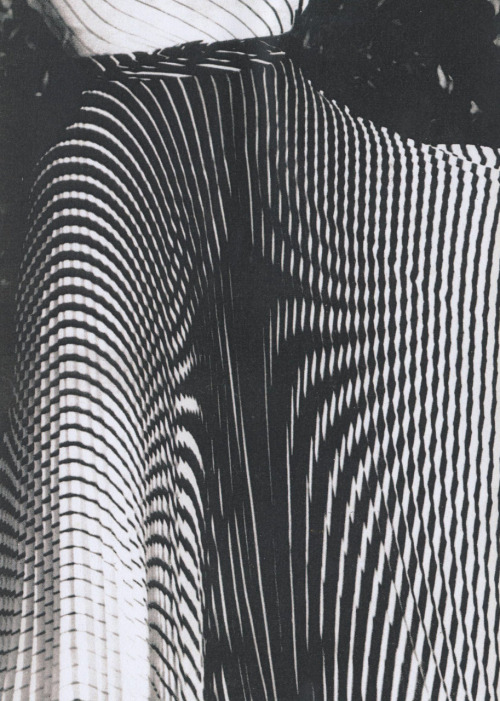
2) Sillhouette: Constant experimentation with body conscious/unconscious
I think this is fairly easy to explain...I'm always interested in how the body is perceived, accepted, adorned, adored, hated, covered, shaped. It is an interest in social conventions, gender history, etc. I'm not drawn towards one aspect or another. I think I just like to experiment as reflective of whatever political views on gender and the body I am prone to at the time

3) Textile and mechanical technique: Subconscious partiality to luxury fabrics and meticulous labour
Going through through my fabric reccomendations...there is an apparent obsession with silks and silk blends, cashmeres and wool. I guess this is why I went for the lusturous satin wedding skirt, the linen tunic, the fur-wool jumper with little flecks of animal print at Salvos. Subconsciously, I must have quality in mind considering the technique involved in some of my designs and hours of labour required for production....
Sustainability factor: that labour is HAND labour!
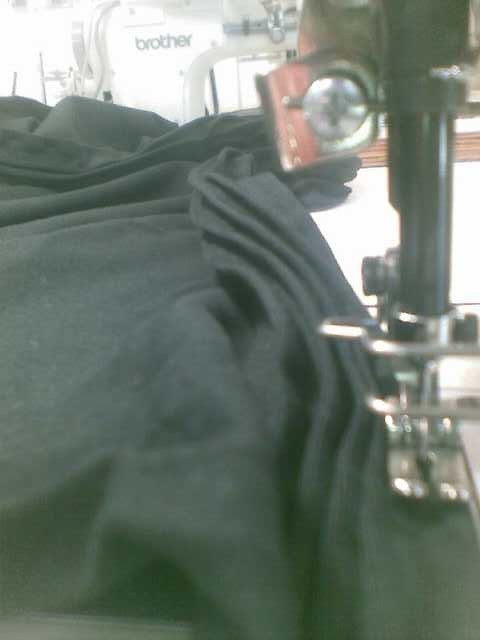
So the garment I will produce for For Us By Us will implement these consistent elements of my work to reflect myself as a designer. By reflecting on an archive of previous works, I am beginning to define my design aesthetic and philosophy.
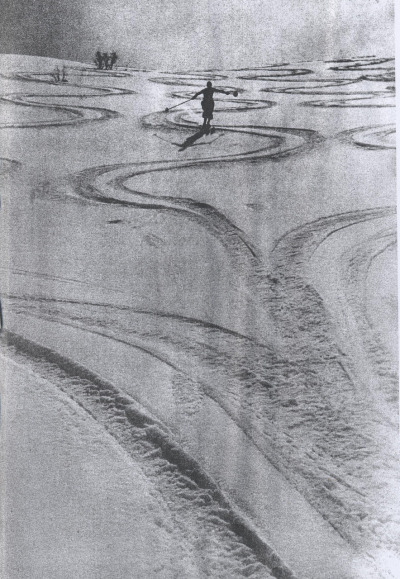
Sunday, August 8, 2010
Ecofashion: Fashioning an Eco-lexicon
Ecofashion is part of that mapping: encompassing terms, adopting, and adapting many theories...Over the last fifteen years the fashion industry, educational
institutions, media, and consequently consumers have become more
aware of the environmental and ecological movement. Environmental,
ecological, green, sustainable, ethical, recycled, organic, and inclusive...(universal) fashion and fashion design, as terms, coexist, cross-fertilize,
and are readily confused. The lack of discussion of the phenomenon
and debate has fueled misunderstandings, and terminology (especially
in the general and fashion media) is often misused.
Fashion as a design discipline has been late to investigate the theoretical
greening of the design production loop, lagging behind industrial
design and architecture, unlike consumer activist campaigns where
fashion has been targeted more than other disciplines. The situation
demonstrates the tension in fashion between theoretical and practical
and the immediate social, economic, and environmental impact of
decisions. Fashion Theory, Volume 12, Issue 4, pp. 525-540)
The term 'Eco Fashion' is one which reflects the increased awareness and activity of employing sustainable procedures and practices within the fashion industry. Over the last fifteen or so years, consumers have quickly realized the industry's destructive history on the environment, resulting in more conscious means of consumption and consideration of a product's future. Naturally, producers respond to this consumer behaviour and have replied with the implementation of ethical practices and procedures under the umbrella term 'Eco Fashion'.
However, to be a bit more critical of this sudden rise of 'Eco Fashion', I beg to question the authenticy of this term particularly in the fashion industry where there is still no known answer to the ethical equation. Fundementally, as an industry driven by consumer trends and product consumption, it seems natural to be inclined to a cynical oversight of some of these 'eco fashion' brands, who employ terms like those Thomas coins: "environmental, ecological, green, sustainable, ethical, recycled, organic". In the same article, Thomas ties the term 'eco fashion' to related areas of marketing, merchandising, and journalism, which supports an idea that without proper education of sustainability and a lack of scholarly resources available to the general spectrum of consumers, 'eco-fashion' and related jargon may be implied as a marketing tool for brands to respond to this new-wave consumer behaviour.
So is 'eco fashion' a trend? I conclude that for a brand to be educated from the outset about sustainable practice, we can aspire towards an industry genuinely concerned about it's environmental impact. In my own opinion, displaying the term 'eco-fashion' all over your label is tasteless and can come across as a marketing tool aimed at attracting consumers. Surely a brand can effectively gain momentumn as being of an ethical standard through subtle implementation of sustainable procedures that seem only second-nature to their practice. Establishing a brand as sustainable may come through two formats:
Incremental Change: making small changes at every level to improve practices.
- This is a popular way for luxury brands to re-consider their sustainable practices because by doing so they retain their sophistication. Brands such as LVMH implemented incremental changes, aspiring towards sustainable development thruogh environmental performance, collective purpose (training staff about environmental responsibilities), controlling environmental hazards, managing product disposal and making commitments outside the company in areas of companies, local communities and associations. (LVMH 2010)
Fundamental Change: challenging the very nature and practices of the industry to develop new business models and ways of operating.
- The effect of the economic downturn was a good opportunity for certain brands to re-pitch themselves in the market as ethically aware. It is a bold move which reflects a brand's determination to succeed sustainable pursuits.
(Fletcher 2008)
“It takes an informed designer to implement change”.
(Brower et al.,2005)
Which is why I attain my priviledge in this project and having the academic resources to make my conscious decisions about sustainability now rather than down the track. One of those decisions is a reaction against coining environmental jargon all over my brand to appeal to consumers, in alignment with the philosophy of tactiful and sophisticated attraction.
Friday, August 6, 2010
Conceptualizing
I'm personally working around a garment which will be relatively neutral coloured so not to detract from whatever will be projected onto it. In my stash I collected a large wedding skirt and an undergarment that has gathering detail in soft mauve tulle. At this point I'd like to work towards creating a fuller shape from the wedding skirt, so that imagery can be projected through layering or something. In response to Louise's concepts of self-exploration throughout her work, I like the idea of incorporating different texturising techniques to my garment as if to represent the aspects of personality. Louise's work has an element of clumsiness which I think will work well...because although I aspire towards perfection in my work, a lot of the time I set myself out meticulous tasks and techniques and lose patience with them easily. I'm working on it! But I think it will be a good chance to take the opportunity to explore some of those techniques without fear of....not so much, a messy outcome, but more expressive experimentation.
This is actually a really ironic process to be taking on of Louise's. Normally I don't really like the idea of including too many aspects of my personality into my work. I usually work strictly with a concept and an aesthetic...which is perhaps why I always want to work with complicated and meticulous textures and shapes. It acts as a facade, a subconscious barrier for people to primarily notice the technique, not necassarily the motifs or the designer behind it.
So it is a challenge to be doing a project where I am drawing inspiration from myself to express myself. I don't think I will be entirely comfortable with it the whole way through...I think there will come a point where I feel like the piece has enough said about me and I'll try and disguise the fragments if I think they are too exposed.
Who knowwwwssss.
Louise has been really helpful in encouraging the intuition of this process, and I like that aspect.

Thursday, August 5, 2010
My Salvos Stash




The trip to the Red Hill Salvation army store was an overwhelming eye opener. Witnessing first hand the tedious process of sorting through mass donations, it is hard comprehending the amount of consumerism and disposal that happens in our society. We were given the tour of the processesing warehouse where the Salvos receive (literally) tonnes of donations weekly, that are then sorted and overseen by quality control. The effort is immense, and I have nothing but admiration for the team of volunteer workers who give up their time to aide this eternal process.
I think the most surprising thing about the trip was disproving my pre-dispositions on shopping at second hand stores. Perhaps it is because I don't really have an eye for vintage shopping...everytime I try to do the whole retro thing, I end up regretting and reselling my pieces. Over the years, whenever I've done a wardrobe clean out I've always culled at least 3 large boxfuls worth of clothing, and I've always given them to the local charity and secondhand shops. But funnily enough, after you see exactly how much clothing comes back to these charities and the processes involved in sorting through it all, it makes you question your actions and I've definately reconsidered my position in the textile lifecycle.
I actually did a clean out of my wardrobe that afternoon when I came home, which took me longer than usual because I had to double think everything I was culling, making sure there was absolutely no use for the items to be in my closet anymore. But it was a good process. Kind of like ethical detoxing! I also noticed that some of my more recent purchases, whilst they weren't of the vintage retro type, were of better quality in terms of durability and also transeasonally. So that's positive, subconsciouslly I am already shopping for things which I know I won't be throwing away anytime soon...
Anyhow, the 5 items I picked out of the store to use in my garment calculated up to the $100 allowance exactly. Cool.
Wednesday, July 28, 2010
Louise Tahiraj
Louise's work reflects an autobiographical exploration, reflecting identity as a process by engaging in intuition and body and form. Her art practice constantly renegotiates her day-to-day physical and psychological experience through a combination of video and drawing processes. Using web-cam technology and hand drawn elements Tahiraj creates a ‘lo-fi’ aesthetic, which stems from ‘spaces of boredom’ that she experiences commonly on the Internet. This experience arises out of excess possibilities at her disposal coupled with a self-limiting inability to access all of these possibilities.
Louise Tahiraj, Total Flip Out, 2009
What is appealing about Louise's work is her experimentation with new techniques, such as collage, drawing, blu-screen technology and video performance. There is a clunky, playful aspect to her work which reflects the pursuit of self-exploration and revelation in her art, and Louise incorporates boldily exploration by staging conventions like dress up and body paint. Louise's work also conveys themes of cyber jargon, and challenges positive-negative relationship between hearing and not seeing or vice versa, which is interesting. In this sense a lot of her work is monochromatic in colour, so not to detract from the concept...or if there is colour or sound, it is very natural and intuitive, based on Louise's current state of emotions or action.

Louise Tahiraj, 2009. Analogue Dialogue, video still.

Louise Tahiraj, 2009. Totally MyFace.

Louise Tahiraj, 2010. Body Collage, video still.
When we met as a group, I think I was really lucky in that I didn't actually pick Louise (I was happy with the original group allocation) and yet we all really seem to be in tune with what to take from Louise's work and where we want to take the project. As a group collective, we're quite interested in experimenting with some of the Blu-screen techniques Louise uses, which will be the thematic tie to all our work. But personally, what I will take from Louise is her intuitive processes of uncovering oneself, and taking that literally by taking and experimenting with body shapes and layers to create something which sort of reflects the self-exploration and acceptance of the diverse aspects, layers, which identify an individual. I also really would like to maintain a black and white, or minimal colour tone aesthetic to this creation so as not to distract from the concept behind it.
I think one of the best things Louise said right from the outset about intuitive practice is feeling rather than seeing; her work is so interested in exploring the naked eye perspective, and afterall much of the work is born out of boredom...so naturally the process is about not being afraid about an unfinished product, or something that is a little bit clumsily put together. The exploration of oneself uncovers many complex layers and nothing is perfect.
Berg Encyclopedia of World Dress and Fashion: Intelligent Textiles
Kinetic materials and high-performance sports fabrics are often considered to be intelligent textiles. Although they are seldom used to gather data, they are programmable, because they were engineered scientifically rather than developed through traditional textile processes alone. Many are able to harness energy or morph biomimetically (that is, to mimic biological functions such as, for example, the transpiration of plant leaves) into new shapes, then revert back to their original form.
The first intelligent textiles are generally considered to be the advanced fabrics created by the National Aeronautics and Space Administration for the first spacesuit. Since then, breakthroughs in fiber technology and new manufacturing processes have resulted in other high-performance fabrics with heightened insulation and absorption. In the early twenty-first century, these textiles are more widely used in protective clothing. They provide firefighters with a barrier against heat and radiation, shield welders from molten metals, and offer police officers and soldiers protection against stab wounds, explosions, and bullets, as well as being used for wet suits for divers and spacesuits for astronauts.
Textiles interwoven with digital impulses, which are mediated by software and transmitted by circuitry, can be programmed to change colors and configure themselves into new patterns, to pulsate, and to illuminate, introducing a new aesthetic to fashion. Tectonic fabrics reveal new colors, textures, and motifs through wear and tear, redefining use as a factor that completes the design process rather than destroying the fabric. These textiles give wearers a new role as they engage with the design process in consuming fabric, heightening garments’ interactive potential.
Intelligent textiles can also contribute to well-being. Certain colors are believed to stimulate the body’s innate healing ability, while textiles constructed from encapsulated fibers can medicate the wearer through his or her skin. Embedded sensors can record the temperature and movements of a patient and diagnose changes in his or her medical condition. Sensors in undergarments can register secretions that signal changes in cervical cells. Intelligent textiles are used in hospital gowns to reduce discomfort and promote improved circulation, while wicking away perspiration and medicating the patient’s skin to accelerate the healing of wounds. Ionized fibers (fibers encapsulated with ions) have antimicrobial properties, protecting the body from deadly bacteria and simultaneously resisting odor-causing bacteria, while sterile “contaminant-aware” textiles change color if germs or environmental toxins contact the textile’s surface.
Medical researchers are developing new types of hybrid textiles that combine biological and engineering parts. Fiber-based heart valves, cardiac-support devices, artificial muscle tissue, arterial filters, and bioimplants are often produced using knitting and embroidery techniques, while implants for cosmetic and reconstructive surgery are woven from electrospun fibers (which are created from polymers spun into continuous fibers by an electrospinning technique). As researchers explore the role of textiles in new medical processes, fabrics are slowly beginning to define body ideals rather than to be shaped by them. Historically, fabric has sculpted and molded body shapes through corsetry, padding, and layering. In an interesting reversal, the surgical textiles used in cosmetic surgery are fashioning the body from within.
The category of intelligent textiles includes other nonwearable fabrics, such as those used for automotive applications, interior design, building construction, and agricultural purposes, including geotextiles (fabrics engineered to be strong enough to hold boulders in place, yet porous enough to allow water to pass through) and agrotextiles (geotextiles made for agricultural applications). Of these, intelligent interior textiles are the most relevant to fashion, because eventually the functions of household technology may be controlled directly from the inhabitant’s garment. As furnishing fabrics are reconceived as technological interfaces, acoustic exchanges, or the absorption or deflection of sound, light sources, and portable environments such as inflatable tents, enclosures, and screens, they will be interwoven with “soft,” that is, nonrigid, circuits, sensors, switches, light-emitting diodes, minicomputers, and microprocessors that will engage with remote systems and interface with audiovisual technology. For example, triggering a sensor on one area of an upholstery motif could change the television channel, while another area could switch the television off. As intelligent textiles begin to make items such as light switches, speakers, antennae, and hard drives redundant, they highlight a process described as “the furniturization of textiles,” whereby intelligent textiles would begin to assume the functions of household objects and replace them altogether.
The intelligent textiles used in health care, sportswear, protective clothing, interior design, and architectural systems could perhaps fuse with mainstream fashion. The now-defunct research organization Starlab claimed that the clothing of the future would combine many different types of intelligent textiles in a single garment, describing it as a “fabric area network.” From their base in Brussels, Starlab conducted research on intelligent clothing as well as nanotechnology, medicine, artificial intelligence, bioinformatics, quantum physics, time travel, and consciousness.
For example, a shirt could have various layers or tiers that interact with the wearer. A diagnostic inner layer could medicate the wearer, while a communicative layer could enable the wearer to interface with Internet and intranet platforms. An external data layer could function as a wireless personal computer, storing and retrieving data via a wearable textile screen, while also providing armorlike protection.
Many leading researchers in the twenty-first century are based at companies such as Kanebo, DuPont, Invista, International Fashion Machines, Phillips Design, Cute Circuit, Infineon, and Eleksen, and at research institutions such as the Massachusetts Institute of Technology Media Lab, the Defense Advanced Research Projects Agency, U.S. Army Soldier Systems Center, Georgia Institute of Technology’s School of Textile and Fiber Engineering, the Virginia Tech E-Textiles Lab, and the Hexagram Research Institute created jointly by Concordia University and the Université du Québec à Montréal (Quebec University at Montreal). The sales of wired clothing are estimated to exceed US$100 million by the end of 2010, contributing to a growing market with a net worth of more than US$1 billion."
BradleyQuinn (n.d.). Snapshot: Intelligent Textiles. In Berg Encyclopedia of World Dress and Fashion: Volume 8 – West Europe . Retrieved 24 Aug. 2010, from http://www.bergfashionlibrary.com/view/bewdf/BEWDF-v8/EDch8021.xml
Tuesday, July 27, 2010
a² + b² = c²
I think that is what is the scariest bit about this project, is that everything we've learned is kind of being turned on it's head. There is no right or wrong anymore, which is a bit of a mindfuck to get your head around.
The main issue with this at this stage of studio is that, after experimentation in first year and being taught the foundations of fashion design, you come into second year learning to appreciate commercial viability and the practices of the industry a lot better in preparation for third year when your collection is suppsoed to sell yourself. Whilst I think this is a fantastic project, I'm wondering whether it is better to be introduced to first years students when they can have more of the creative freedom and choice of linear direction to guide them for the rest of their studies.
Textile Breakdown.
So in the linear system we have become accustomed to, as a designer Ihave always selected a fabric based on how it has felt, or looked, or the level of technical difficulty involved in working with it. And even when I measured out how much fabric I would need, it would be measured down to factor in how much more expensive it would be to purchase excess fabric.
So yes, I am a guilty, ignorant designer.
In researching textile waste for an assignment last year, I referred to the 2009 discussion paper on Sources of Textile Wast In Australia, and I've pulled out a few extracts to start at the root of the issues of textile sustainability.
And it starts before it even reaches the consumer:
2.2.1 Pre-consumer textile waste
Pre-consumer textile waste is manufacturing waste that is generated by processing fibres, (be they
natural or synthetic fibres) and the production of finished yarns and textiles, technical textiles,
nonwovens, garments and footwear, including off-cuts, selvages, shearings, rejected materials and/or
B-grade garments. Whilst “cabbage” (over estimated fabric meters and off-cuts of saleable size) has
for many years, been resold into markets or made-up into smaller items, most pre-consumer textile
waste in Australia is simply sent to landfill. (Sources of Textile Wast In Australia, 2009)
The thing which speaks to me the loudest about this is the point about textile 'cabbage' going straight to landfill. I.e all the fabric roll cut offs and excess fabric scraps that designers like me dispose of when we've bought too much fabric to start with.
I refer back to my previous post, You Call It Drab, I Call It Innovation where I uploaded an image of Colin Firth's wife, Livia Giuggioli’s Oscars gown this year. It was made from pre-consumer waste of high-end Italian design manufacturers: end-of-roll fabric, discarded silk and organza offcuts, as well as silk chiffon plucked from unfinished petticoats and other cutting process leftovers, designed by Orsola de Castro of From Somewhere.
The following is the vision statement from From Somewhere's website, to explain their efforts in sustainable fashion:
"From Somewhere is a creative sustainable fashion label run by Orsola de Castro and Filippo Ricci. All womenswear collections are made with lucyru designer pre-consumer waste such as proofs, swatches, production off-cuts and end of rolls - upcycling high-end fashion and textile surplus into beautiful clothes that take into account the balance beetween consumption and disposal."

In reflection of this, I have made a concious decision to regulate how much excess fabric I waste in the initial stages of garment construction. Even thinking about other things that can be made out of scraps, like accessories or shoe coverings, bags....button coverings, it all comes down to consideration.




